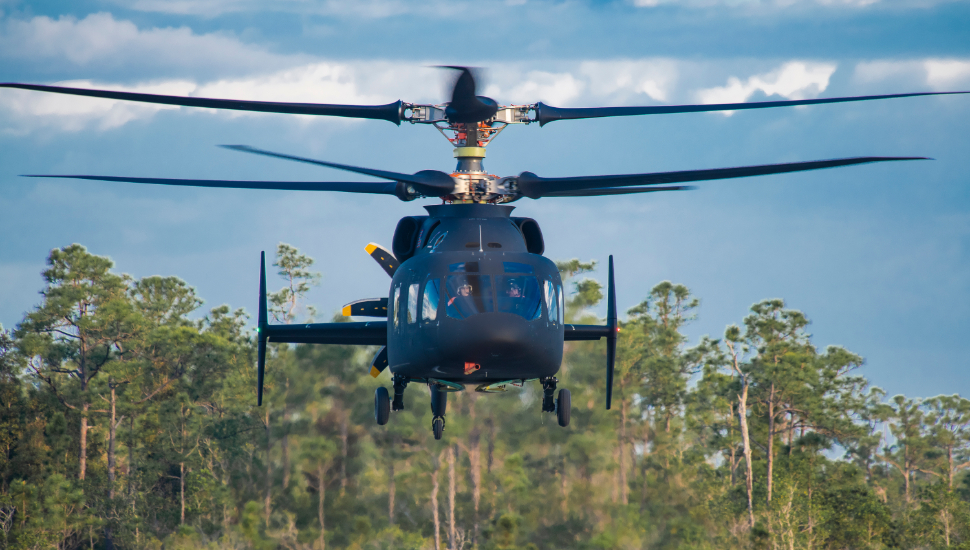The US Army is soliciting conceptual designs for its Future Long Range Assault Aircraft (FLRAA), opening the competition to replace the Sikorsky UH-60 Black Hawk.
In the first phase of the competitive demonstration and risk reduction process, industry participants are asked to submit an initial aircraft conceptual design. That includes “technical documentation to support the design, requirements decompositions, trade studies, and requirements feasibility,” says the US Army in a 3 September online post.
In an effort to speed up FLRAA development and delivery efforts, the service will use its Other Transaction Authority (OTA) to carry out the competition through the Aviation and Missile Technology Consortium. The consortium is managed by Advanced Technology International, a private organization specialising in industry-government collaborations.

Sikorsky-Boeing SB-1 Defiant first flight
Sikorsky-Boeing
According to the consortium, benefits of the OTA process include a faster prototype-acquisition process and the ability to engage a diverse range of suppliers.
“[OTA]-based collaborations are not subject to some of the regulations that apply to Federal Acquisition Regulation-based acquisitions,” says the Aviation and Missile Technology Consortium on its website. “The [OTA]-based consortium model allows government and industry to communicate more openly, from requirement generation to the proposal stage."
The US Army believes bypassing regulations should allow it to field a new rotorcraft in about a decade.
"We are committed to equipping the Army's first unit with the Future Long Range Assault Aircraft no later than 2030," says Colonel David Phillips, US Army project manager for FLRAA.
The US Army wants its next utility rotorcraft to have significantly better performance than its current aircraft, the UH-60. In April 2019, it unveiled its desired specifications. These include a maximum cruise speed of 280kt (519km/h). It also wants the aircraft to have an unrefuelled combat radius of 300nm (556km), and a one-way unrefuelled range of at least 2,440nm (4,520km).
Two leading contenders in the FLRAA competition have developed technology demonstration aircraft: a Sikorsky-Boeing team, and Bell. Sikorsky-Boeing’s SB-1 Defiant compound helicopter made its first flight in March 2019. Bell’s V-280 Valor tiltrotor first flew in December 2017.
Source: FlightGlobal.com



















